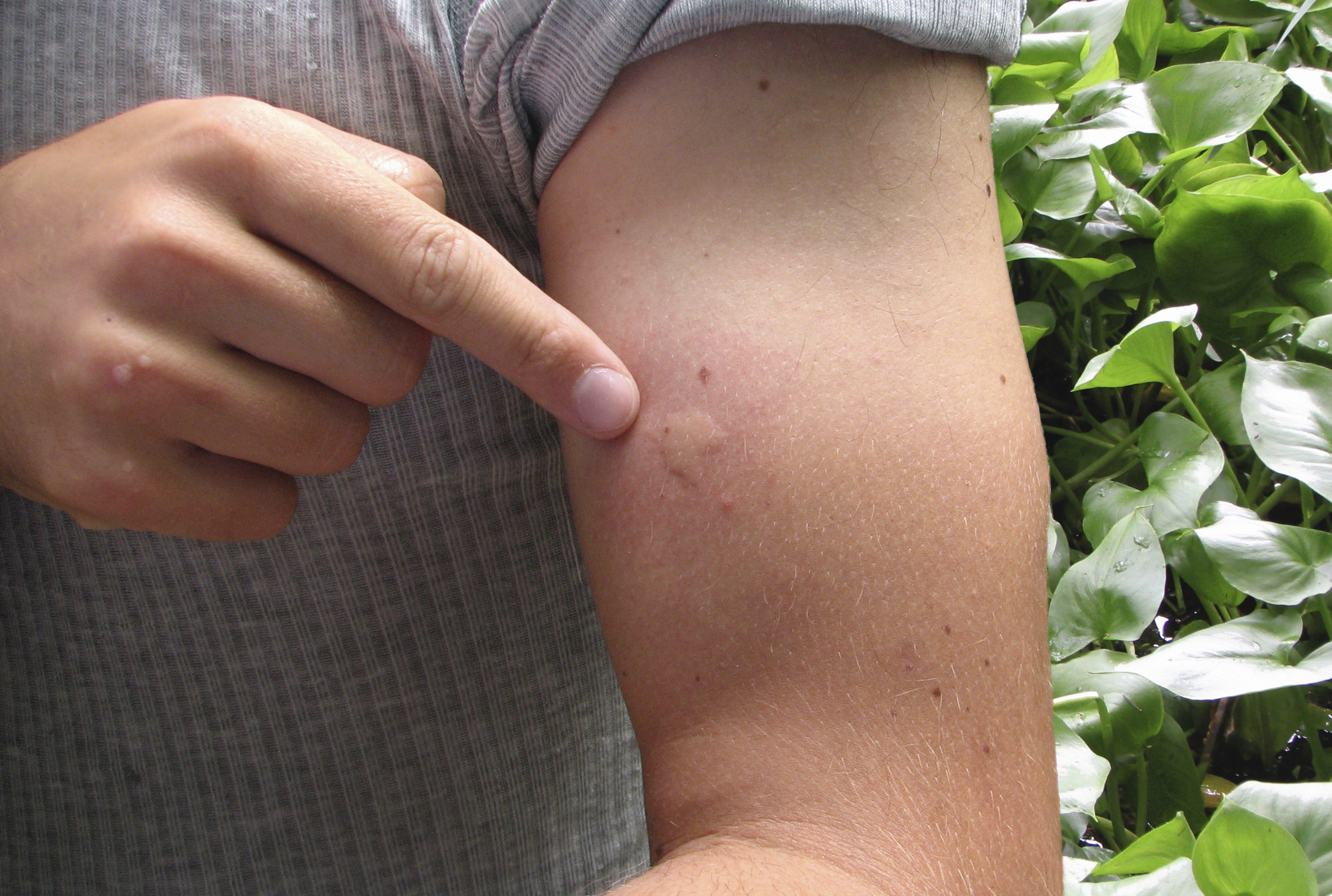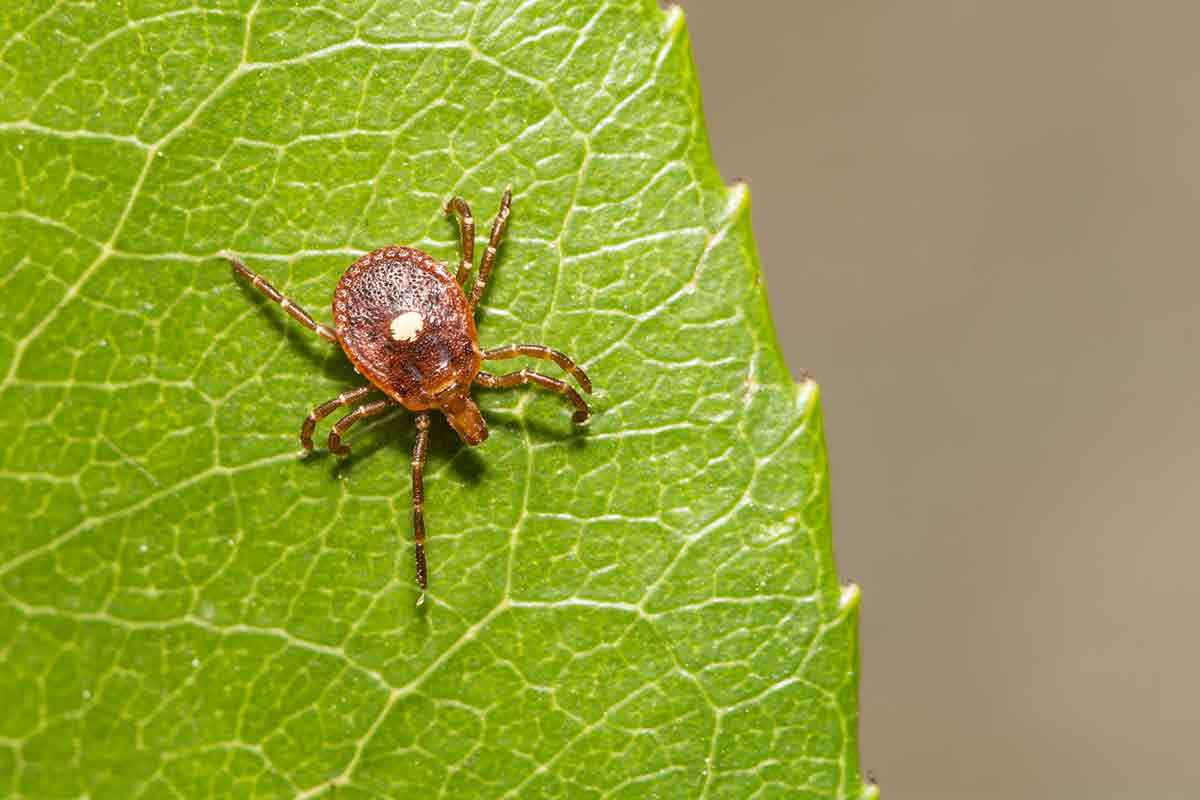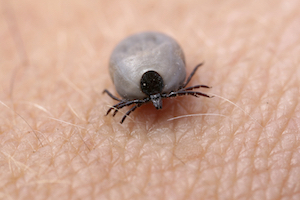Rocky Mountain Wood Ticks Dermacentor andersoni Stiles

Rocky Mountain Wood Tick Identification
Color: Brown, becoming grayish when engorged
Size: 1/8” (3.2 mm) un-engorged; 5/8” (16.5mm) engorged
Legs: Larvae have 6 legs, nymphs and adults have 8 legs
Antennae: No
Shape: Oval, flattened
Region: Rocky Mountain states
What is a Rocky Mountain Wood Tick?
The Rocky Mountain wood tick gets its name from its primary distribution being in the Rocky Mountain states, such as Colorado, Idaho and Montana, amongst others. This tick species has the preferred habitat of wooded areas such as meadows, lawns and forests. The Rocky Mountain wood tick can transmit Rocky Mountain spotted fever, Colorado tick fever, tularemia as well as cause tick paralysis.
What Do Rocky Mountain Wood Ticks Look Like?
Rocky Mountain wood ticks are brown in color and become grayish when engorged. Rocky Mountain wood ticks have an oval-shaped body that is somewhat flattened from top to bottom. Unengorged adult female wood ticks are about 1/8”, while male are about 1/16-1/4”. Engorged ticks are about 5/8” long and can be 1/2” wide. Larvae have 6 legs, while nymphs and adults have 8.
The Rocky Mountain wood tick is considered a three-host tick because each feeding stage (larva, nymph, and adult) requires a different host. This tick species becomes active with the first warm days of spring, usually feeding from mid-March to mid-July, when temperatures increase and the air becomes more dry. Rocky Mountain wood ticks typically crawl up low vegetation and wait for an appropriate host to pass. Larvae and nymphs feed mainly on rodents such as voles, chipmunks and squirrels. Adults prefer to feed on medium to large animal hosts including sheep, deer and humans. Adults are active on the ground during sunny days, climbing up and down vegetation along trails. Adult female Rocky Mountain wood ticks will insert their mouthparts into the host and feed until fully engorged, while male Rocky Mountain wood ticks feed for a shorter period of time.
Adult Rocky Mountain wood ticks can survive for more than a year unfed. The full life cycle of a Rocky Mountain wood tick requires one to three years outdoors depending on host availability.
Rocky Mountain wood ticks do not survive well indoors and are usually found in wooded areas with low-growing vegetation, open grasslands and around trails. If found indoors, the wood tick was probably carried in on a pet or human and dropped off once fully engorged. This tick is found at higher densities at lower elevation. This environment helps them easily attach to a passing host that brushes against the vegetation. Nymphs and adults overwinter in ground debris.
If a Rocky Mountain wood tick bites you, use fine-tipped tweezers to grasp it as close to the skin's surface as possible. Then, pull upward with steady, even pressure and avoid twisting or jerking the tick as this can cause the mouthparts to break off and remain in the skin. Once the tick is removed, thoroughly clean the bite site with soap and water. Then, flush the tick down the toilet or wrap it tightly in a tissue before disposing in a closed receptacle. If you develop a rash, headaches, pains or fever, call a doctor immediately.
The Rocky Mountain wood tick is a primary vector of Rocky Mountain spotted fever, which they contract and transmit after feeding on small animals, primarily rodents. Rocky Mountain spotted fever is a severe infectious disease with a mortality rate of more than 20 percent if left untreated. The main symptom of this infectious disease is a rash that develops in 2-5 days, starting with the wrists and ankles and then spreading to the rest of the body. A wood tick needs to be attached for more than two hours before the disease is transmitted, so early detection is key.
Rocky Mountain wood ticks are also vectors for Colorado tick fever, a viral disease of short duration and low mortality. The disease is characterized by sudden onset saddleback fever (fever disappearing in 1-3 days in middle of illness only to later return), headache, muscular pain, and reduction of white corpuscles in blood. In contrast to tickborne diseases such as Lyme disease, there is typically no accompanying rash. The disease is more common in adult males, but also occurs in women and children.
This tick species can also transmit tularemia, typically transmitted from rabbits and rodents. Symptoms of tularemia include chills and fever, prostration, and ulcer at the site of the tick bite, as well as tender, swollen lymph nodes.
Additionally, Rocky Mountain wood tick bites can cause tick paralysis when they feed for at least 5-6 days. Paralytic symptoms usually start in the extremities and become evident as unsteadiness and loss of reflex actions. If the tick is not removed, death could result from respiratory failure. Children are particularly susceptible to this. However, if the tick is properly removed, recovery is rapid – usually within 24-72 hours.
Outdoors, experts recommend wearing repellent containing at least 20 percent DEET and long-sleeved clothes. Keep trouser legs tucked into socks or boots, shirts tucked in and clothes buttoned. Avoid sitting on logs, stumps or the ground in brushy areas. Periodically inspect clothing and the body for ticks before going inside. Also be sure to inspect pets after playing outdoors. Experts also recommend homeowners keep grass cut low, around 3 inches or less, and ensure weeds and woodpiles are removed. Trim back vegetation along trails, paths and yard edges and remove debris and ground cover to discourage rodent activity, which wood ticks are attracted to.
If you suspect a Rocky Mountain wood tick issue at your home, the best course of action is to contact a licensed pest control professional. They will conduct a thorough inspection to identify the full extent of the problem. Once the situation is properly identified, the appropriate control measures can be taken.
You can find a certified pest professional near you with the helpful zip code search below.




